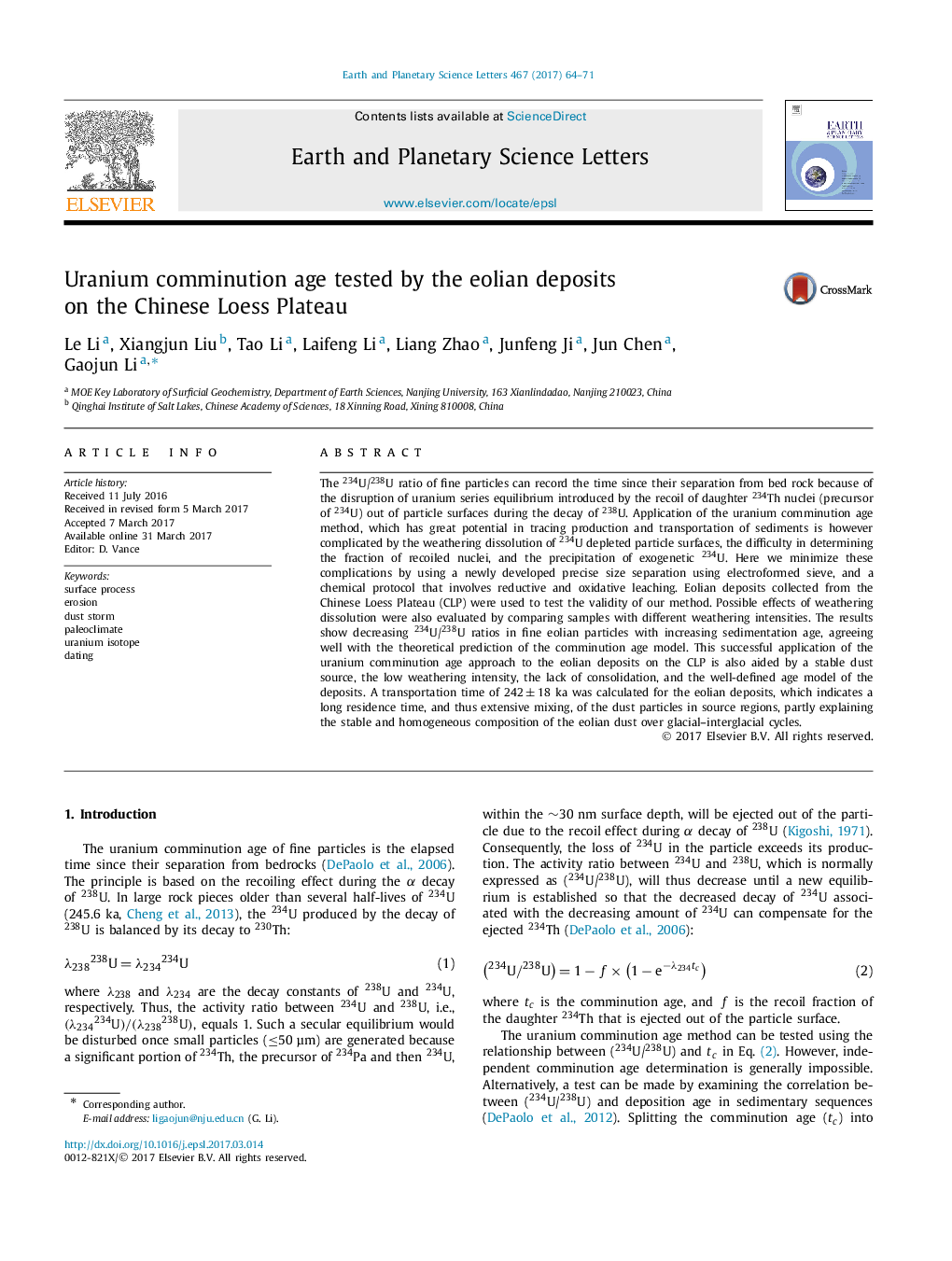| Article ID | Journal | Published Year | Pages | File Type |
|---|---|---|---|---|
| 5779939 | Earth and Planetary Science Letters | 2017 | 8 Pages |
â¢Methods of precise size separation and chemical cleaning were introduced to eolian loess to apply uranium comminution age.â¢The eolian deposits on the Chinese Loess Plateau confirm the model of uranium comminution age.â¢Chinese loess has long residence time of 242±18 ka in source regions before eolian transportation.
The U234/238U ratio of fine particles can record the time since their separation from bed rock because of the disruption of uranium series equilibrium introduced by the recoil of daughter 234Th nuclei (precursor of 234U) out of particle surfaces during the decay of 238U. Application of the uranium comminution age method, which has great potential in tracing production and transportation of sediments is however complicated by the weathering dissolution of U234 depleted particle surfaces, the difficulty in determining the fraction of recoiled nuclei, and the precipitation of exogenetic U234. Here we minimize these complications by using a newly developed precise size separation using electroformed sieve, and a chemical protocol that involves reductive and oxidative leaching. Eolian deposits collected from the Chinese Loess Plateau (CLP) were used to test the validity of our method. Possible effects of weathering dissolution were also evaluated by comparing samples with different weathering intensities. The results show decreasing 234U/238U ratios in fine eolian particles with increasing sedimentation age, agreeing well with the theoretical prediction of the comminution age model. This successful application of the uranium comminution age approach to the eolian deposits on the CLP is also aided by a stable dust source, the low weathering intensity, the lack of consolidation, and the well-defined age model of the deposits. A transportation time of 242±18 ka was calculated for the eolian deposits, which indicates a long residence time, and thus extensive mixing, of the dust particles in source regions, partly explaining the stable and homogeneous composition of the eolian dust over glacial-interglacial cycles.
